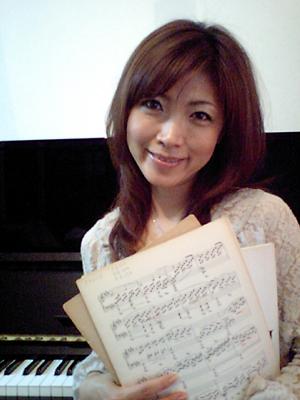kinuyo_yamashita
It’s December, which means that the gaming event of the calendar year, MAGFest XI, is swiftly approaching. If you are unaware of MAGFest, I highly recommend you check out my three posts covering the event here, here, and here. Not only do I think my posts will satiate your curiosity, I want you to know why it’s awesome so that you’ll be there this year with me and the thousands of others who crave the coming of the following year’s event every waking day that they’re not at MAGFest.
Alternatively, you can just skip reading those posts and take your chances with my recommendation by going straight to the MAGFest website to buy tickets and book a hotel room. Nothing wrong with that!
I’ll be doing a few posts between now and January 3rd covering some of the headliners. These crash courses will give you enough fodder to prepare some questions for the guests and/or just simply enjoy their presence more since you’ll know who they are and what they’ve done.
First up is VGM composer Kinuyo Yamashita, who is most well known for composing the soundtrack to the original Castlevania.
Yamashita was born on December 31, 1965, in Amagasaki, a city that is located in the Hyogo prefecture in the Kansai region of Japan (1,2,3). Growing up, Yamashita studied piano as a child, but aside from that received no formal musical training (4). It seems, however, that music had left its mark on her life, as, despite having graduated with a degree in Electronic Engineering from the Osaka Electro-Communication University, she had a desire to base her career in working on musical instrument hardware (5). In turn, despite there being a limited job market for women in that line of work, upon graduating she scored her first job, which was with Konami, in 1986.
Inspiration struck early—Castlevania was Yamashita’s first video game soundtrack. When coming up with musical ideas for the game, she “aimed to create music suitable for the image,” citing both “the gothic images of the background” and – intriguingly – “the dynamicism with which the player moves” as influences (6). Having absorbed those elements, a rock-tinged flavor usurped any influence that came from her musical idols – the likes of Nat King Cole, Chopin, and Beethoven. This direction “came naturally” and “gradually”—she had no specific plan as to what the vibe should be.
When the game was released, the music was not credited to Yamashita on the credits page. Instead, Konami used pseudonyms for its talent teams, an idea Yamashita assumes came about due to Konami wanting to mask the identities of its talent (5). She herself did not even know about the pseudonyms at the time, including her own given name, James Banana, a silly harkening back to the composer of the score to the 1958 film Dracula, James Bernard (1). In fact, Yamashita was not even aware of the popularity of her music to Castlevania until about 2009 (6). In her interview with SquareEnix Music Online, though, she humbly notes that the love and memorability of the music is not just a product of her own efforts; rather, the combined elements of the game, including that of the “scenario, gameplay, [and] characters” made every individual element reach the heights it has in its popularity with gamers.
After Castlevania, Yamashita went on to work on other projects within Konami. She had a desire to work on Castelvania II, but she was moved to another project, never to return to the series, letting other composers, according to her, create their own distinct Castlevania worlds through their music (6). In 1987, she composed more memorable works for the game Esper Dream.
Working on Esper Dream was very significant to Yamashita, as she handled everything from the soundtrack to the sound effects to the programming of her work6. Though released just a year after Castlevania, Esper claims a musical vibe that is all its own. Rather than an undead-slaying action game, Esper is an RPG. Immediately – just by knowing that fact – one might assume the music would differ significantly between the two titles; however, Yamashita claims that the genre itself had no bearing on what she wrote. Yamashita touches on her thought process even more in an interview with SquareEnix Music Online, saying:
Before I begin composing, I first imagine the world of the games, the target age group, the purpose of the game, and whatnot. I keep these things in my head and compose. As result, the genre of the music varies quite a bit from… game to game, but the way I write does not change at all.
She certainly composed a couple of tracks that one might relate to her work on Castlevania (such as at 4:42 and 6:22 above), but on the whole, instead of another rock opus, most of Esper’s OST has a major, pop-centric sound.
In 1989, after having worked on music and sound for twelve titles, Yamashita called it quits at Konami due to the toll that the physical demands of her job had taken on her (1, 4). Despite both receiving numerous offers from suitors looking to rein her in full-time, and despite struggling financially, she decided that living as an independent composer – and working in a café part-time – was in her best interests (6). During the nineties, Yamashita composed for Taito’s Power Blade series as well as the SNES rendition of Mighty Morphin’ Power Rangers (1). Perhaps, though, the work of Yamashita that most ears would have come across would have been the soundtrack to Mega Man X3, a body of work that she composed under a bit of pressure because of knowing the lauded series’ history and feeling the need to “live up to [the] expectations” therein (5).
Yamashita stopped composing for a time after suffering two brain hemorrhages in 1998 (6, 7). Though the incidents might have affected her work in the short-term, she claims that she has felt no residual effects in the long run. Since then, she has composed for many games over the years, most notably Medabots (Medarot) series and Buffy the Vampire Slayer: Wrath of the Darkhul King. In 2006 she worked for a small Japanese company, returned to freelancing a while later, and then came full circle to sign back up with Konami in 2008 until she moved to the United States in 20104.
Sometime between 2008 and 2009, Yamashita learned of Video Games Live and that her music was being performed around the world (6). Though arrangements of her works were being played, she does not believe that the producers of the show actually knew about her herself. In fact, she attributes being invited as a guest to the performances in Japan to people having viewed her MySpace page because of the biographical information that she provided on it.
Currently Yamashita resides in New Jersey and continues to compose independently (4). Starting this year she started working on J-Pop and R&B tunes with singer-songwriter Thomas Howard Lichenstein (THL). If you are a Dance Dance Revolution fan, you likely will have had – albeit unwillingly – Thomas Howard’s “Silent Hill” stuck in your head a time or two. You can hear her collaborations with him on her MySpace page.
Yamashita is scheduled to be performing and hosting a Q&A session at MAGFest on Saturday, January 5, at 10am. I hope to see you there!
1 “Kinuyo Yamashita.” Wikipedia. 3 Nov. 2012. 12 Dec. 2012 <http://en.wikipedia.org/wiki/Kinuyo_Yamashita>
2 “Kinuyo Yamashita.” Moby Games. 12 Dec. 2012 <http://www.mobygames.com/developer/sheet/view/developerId,185632/>
3 “Hyogo Prefecture.” Wikipedia. 6 Nov. 2012. 12 Dec. 2012. <http://en.wikipedia.org/wiki/Hy%C5%8Dgo_Prefecture>
4 “Biography.” Kinuyo Yamashita Official Website. 2011. 12 Dec. 2012 <http://kinuyoyamashita.com/biography.html>
5 “Interview with game composer Kinuyo Yamashita.” GAMIKIA. 12 Dec. 2012 <http://gamikia.com/interview-with-game-composer-kinuyo-yamashita/>
6 Greening, Chris & Shota Nakama. “Interview with Kinuyo Yamashita.” SquareEnix Music Online. Ed. Chris Greening. 2010 Feb. 12 Dec. 2012 <http://www.squareenixmusic.com/features/interviews/kinuyoyamashita.shtml>
7 In the SquareEnix Music Online interview, Yamashita is quoted as saying that she didn’t compose for a couple of years after the hemorrhages; however, the Wiki on her states otherwise, as it credits her for having composed for a number of titles every year from 1986 to 2004.




